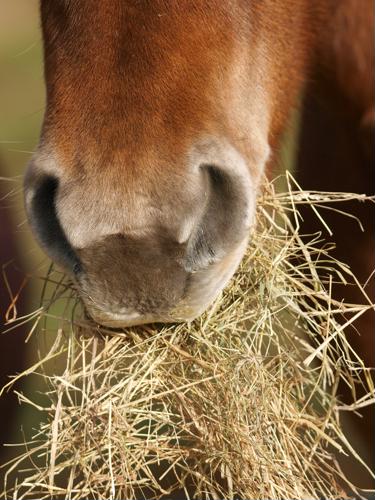There are a variety of reasons to switch your horse’s feed. Maybe you’ve noticed your horse has some vitamin deficiencies due to poor soil where it forages, and in addition to using feed supplements such as Ultra Fire from Finish Line to make up for these nutritional gaps, you’d like to provide your favorite animal with a more well-rounded dietary plan. Perhaps your veterinarian has told you a more robust feed would help your horse maintain it health as well as a shiny coat, and you’d like to provide it with the best. Either way, there are some digestive concerns you should be mindful of when you’re transitioning your horse to a new feed. Here’s what to look out for when switching feed and how you can help your horse stay healthy during the process:
Understanding digestion
Depending on what your horse is currently eating and what you plan on switching it to, your horse’s digestive system may struggle to adapt if the transition is done too quickly. When switching feed, you’ll be exposing your horse to new bacteria – the healthy kind, of course – and it will need time to adjust.
The new bacteria that enters into digestive tract may spark the intestines and colon to clear the horse out of previous feed all at once, which can create digestive issues, including colic. Think of it like a cleanse – the new feed is good for your horse, but first it’s going to cause a bit of trouble if the bacteria is given free rein all at once.
Hay
Transitioning to new hay should take about 10 to 14 days, according to Horse Journals. On days one to three, use 75 percent of the old hay with 25 percent new hay. On days four to six, transition to a 50 percent split between the old and new hay. On days seven to 10, use 25 percent old hay and 75 percent new hay. Each horse is different – if you notice yours having digestive issues as you increase their new hay amount, slow down a bit and add a few more days to each step.
Pellet feed
If your horse is experiencing digestive trouble, slow the process down and stretch it to two weeks.
Apply a similar approach to pelleted feed. If you’re trying to increase your horse’s overall feed intake, don’t give it the full amount you’re aiming for all at once. Instead, researchers suggest raising the portion sizes by half a pound each day. Horses will need time to adjust to greater amounts of food in their stomachs, and an overly full horse is often not a happy horse, so proceed slowly.
When switching altogether, introduce a new feed by 25 percent for three days. Then move on to serving your horse a 50/50 split of new and old food for the next three days, and finally give your horse 75 percent new feed and 25 percent old feed for days seven to 10. Most horses should be fully adjusted by day 10, but if yours is experiencing digestive trouble, slow the process down and stretch it to 14 days. It may be a bit more work for a couple of weeks, but will save you from dealing with unpleasant bowel movements and will make your horse more comfortable during this period.
Supplements
Take some time to carefully assess the type of feed your horse needs. Depending on where your horse grazes, it may be short in vitamin A, C, K or iron, for example. Consider the kind of weather you’ve had over the last few months as well as geographical challenges that create vitamin deficiencies. Has your area experienced a drought over the last few months? You can offset these vitamin losses with new feeds as well as supplements. Even the best feeds may be lacking in some vitamins, so this is where supplements can become your horse’s new best friend.
Many horses are vitamin B deficient. If you think that’s the case with your animal, you can try Finish Line’s Vitamin B1 Blend. This supplement promotes healthy nerves and a strong digestive tract, so it may be a good addition to your feed transition plan. Or you can use the Vitamin E & Selenium supplement to offset an environment that lacks these vitamins and minerals to promote healthy muscle function.








